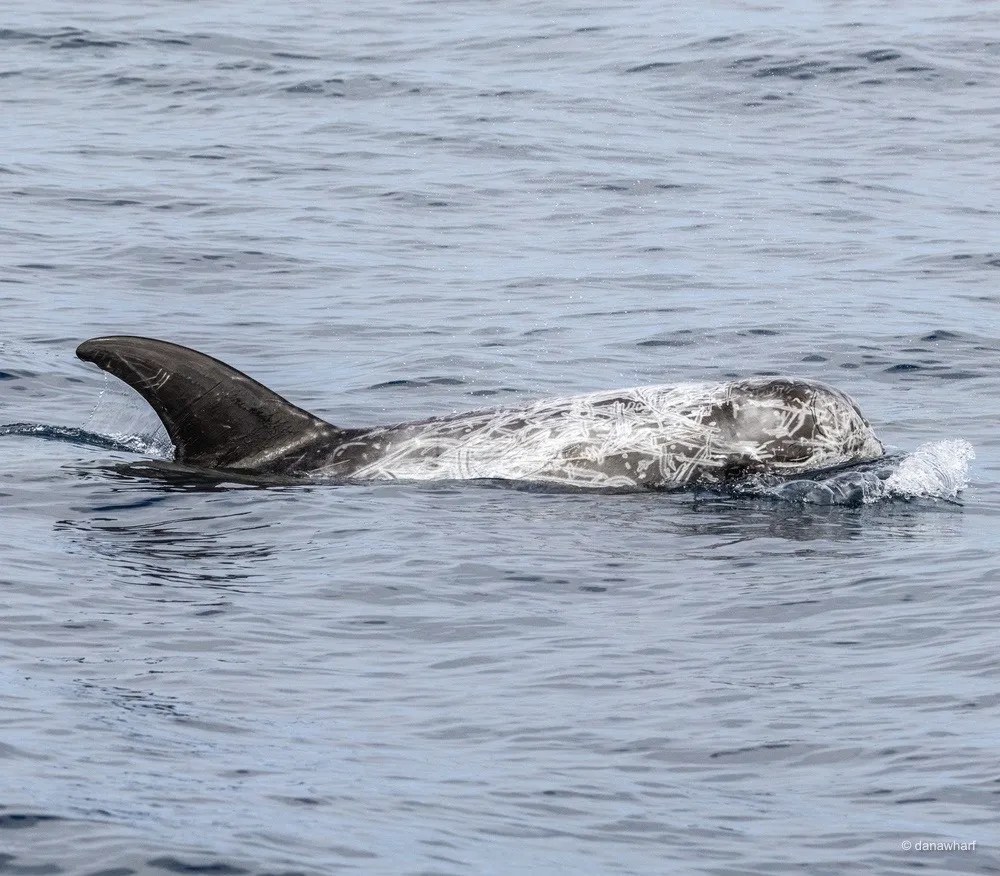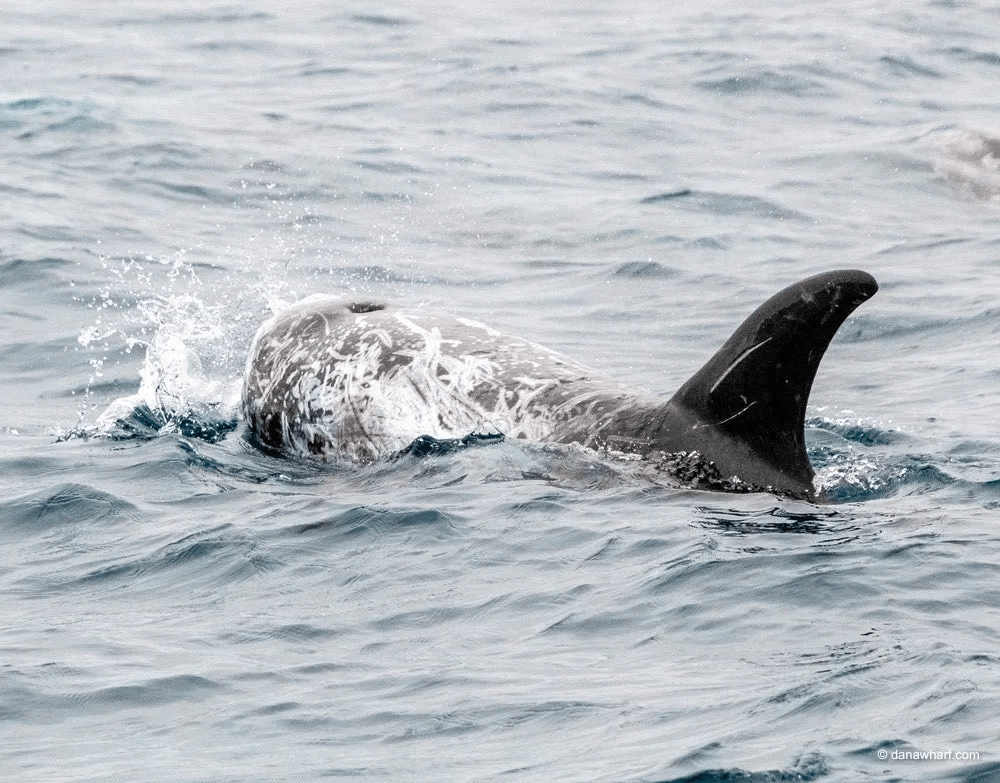Risso’s Dolphins: Masters of the Deep

Risso’s Dolphins: Masters of the Deep
Risso’s dolphins, scientifically known as Grampus griseus, are a captivating species of marine mammals that belong to the Delphinidae family. These unique dolphins have earned a special place in the hearts of marine biologists and enthusiasts alike due to their distinct appearance, behavior, and habitat preferences.

Anatomy of Risso’s Dolphins:
Risso’s dolphins possess a robust physique that sets them apart from other dolphin species. Their rounded head and prominent forehead give them a somewhat bulbous appearance. However, what truly distinguishes them is the numerous scars and scratches that adorn their bodies. These marks, often white or lighter in color, are believed to result from interactions with other dolphins or from hunting for prey in rocky areas, lending the Risso’s dolphins their unique, battle-scarred look.
Their coloration differs significantly from that of other dolphins. They are primarily gray, with a lighter underside and a darker dorsal side. Interestingly, as they age, their coloration tends to lighten, and older individuals may appear almost white. This gradual transformation is attributed to the accumulation of scars over time.
In addition to their distinctive appearance, Risso’s dolphins sport a large, triangular dorsal fin on their back, aiding them in maintaining stability while swimming. They also possess a long, slender tail that efficiently propels them through the water. Their pectoral fins are quite long and pointed, contributing to their navigation and balance.
Behavior and Communication:
Risso’s dolphins are renowned for their social behavior, frequently found in groups known as pods. These pods can range in size from just a few individuals to several dozen. Within these close-knit communities, dolphins communicate using a variety of vocalizations, including clicks, whistles, and body movements. These sounds serve various purposes, such as locating food, navigating, and maintaining strong social bonds.
One particularly captivating behavior of Risso’s dolphins is their penchant for leaping out of the water, a phenomenon known as breaching. Breaching is believed to serve multiple functions, including communication, play, and hunting. When these majestic creatures breach, they create a spectacle, launching themselves out of the water before gracefully returning with a splash.
Risso’s dolphins are also known for their curiosity and may occasionally approach boats or swimmers. It’s important, however, to remember that these are wild animals, and interactions should occur from a safe distance to avoid disturbing their natural behaviors, which can be stressful for the dolphins.

Habitat and Distribution:
Risso’s dolphins are versatile in terms of habitat and can be found in oceans worldwide, although they tend to favor warmer waters. They are commonly spotted in regions such as the Mediterranean Sea, the Atlantic Ocean, and the Pacific Ocean. These dolphins are known to inhabit both coastal and offshore waters, often venturing into deeper waters in pursuit of their preferred prey, which includes squid, fish, and crustaceans.
Their adaptability is particularly evident when they navigate areas with steep underwater cliffs and rocky coastlines. These environments provide ample opportunities for hunting, making them prime feeding grounds for Risso’s dolphins. Impressively, these dolphins can dive to great depths, sometimes exceeding 1000 meters, in their relentless search for squid.

Conservation Status:
As of now, the conservation status of Risso’s dolphins is classified as “Least Concern” by the International Union for Conservation of Nature (IUCN). This classification indicates that their population is stable and not currently at risk of extinction. However, like many marine species, Risso’s dolphins face threats arising from human activities.
One of the significant threats comes from pollution, particularly plastic debris, which they can ingest, often mistaking it for food. This can result in injuries or even fatalities. Habitat destruction, frequently driven by coastal development, can also disrupt their feeding and breeding grounds. Furthermore, entanglement in fishing gear poses a major threat, leading to injuries and, unfortunately, deaths among Risso’s dolphins.
Despite their protected status, some countries continue to engage in hunts targeting Risso’s dolphins. These activities run counter to international agreements aimed at preserving these magnificent creatures.

Conservation Efforts:
Efforts are being made worldwide to safeguard Risso’s dolphins and their habitats. These initiatives include the establishment of marine protected areas, regulations governing fishing practices, and public awareness campaigns to promote responsible dolphin watching. Research is also ongoing to gain a better understanding of their behavior, distribution, and population trends, providing valuable insights that inform conservation strategies.
Conclusion:
Risso’s dolphins are enigmatic creatures that captivate the imagination of all who encounter them. Their distinctive appearance, social behavior, and adaptability make them a subject of great interest for researchers and nature enthusiasts alike. By delving into their anatomy, behavior, and habitat, we can gain a deeper appreciation for these magnificent creatures and work collectively to ensure their continued existence.
The more we uncover about Risso’s dolphins, the more we realize the intricacies of their lives. They are not just another species of dolphin; they are a testament to the diversity and wonder of marine life. As we explore further into the world of Risso’s dolphins, we continue to unveil their secrets and must remain committed to preserving them in the face of growing human-induced threats. By doing so, we can ensure that these remarkable creatures will continue to thrive for generations to come, adding to the rich tapestry of life in our oceans.
